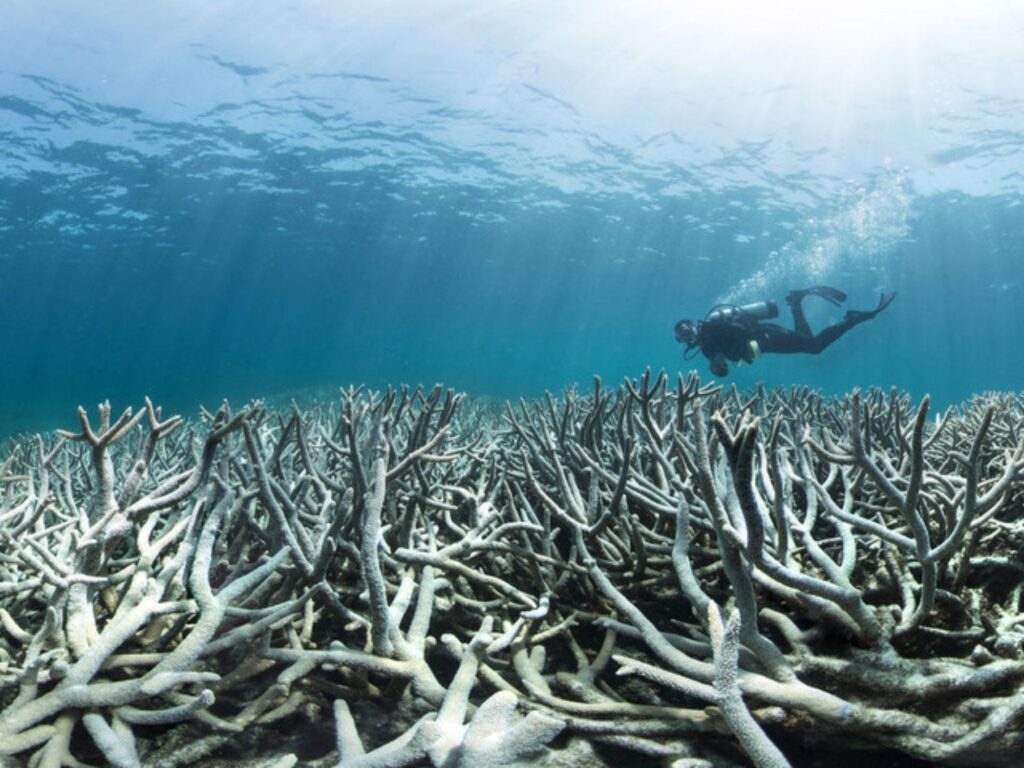Another widespread bleaching event has begun, and all eyes are focused on the Great Barrier Reef. This is the sixth mass bleaching event impacting Australia’s famous reefs and is driven largely by the planet’s rising ocean temperatures.
In recent weeks, field scientists and marine park authorities have reported signs of minor to severe bleaching on different sections of the Great Barrier Reef and so far, our observations through the Allen Coral Atlas (the Atlas) also confirm this data.
The event is developing as the United Nations does a 10-day monitoring mission of the Great Barrier Reef, with results to be discussed at an important World Heritage Committee meeting in June.
How Can the Atlas Be Used During Coral Bleaching Events?
We are working directly with the Atlas, the world’s first comprehensive map of shallow water coral reefs, to improve monitoring of bleaching events. Thanks to advanced algorithms and more than 2 million high-resolution satellite images, we can detect the conditions of coral reefs in different parts of the world.
The Atlas is testing a new bleaching monitoring system that measures the brightness of coral reefs and categorizes whether bleaching risk is low, moderate, or severe. CORAL’s Program and Outreach Manager, Andrea Rivera-Sosa, is currently collaborating with field scientists in Australia to groundtruth the data collected by the tool.
“Many scientists are monitoring right now and sharing information on reef conditions. By matching their findings with the Atlas’s bleaching monitoring system, we can help validate the Atlas’s algorithm,” says Rivera-Sosa. “This will further strengthen the capacity of the bleaching monitoring system to better inform scientists around the world.”
If the Atlas can successfully determine where and when bleaching occurs, it will help scientists better track these events, and help communities advocate for regulations that reduce local stressors in areas impacted by bleaching. Minimizing direct threats, like overfishing and water pollution, while also reducing carbon emissions, will give coral reefs a better chance of surviving and recuperating from these widespread bleaching events, and ultimately adapting to warmer waters.
What Could Bleaching Events Mean for Coral Reefs?
The first global mass bleaching event occurred in 1998, and sadly, these instances have become more and more frequent. Scientists and environment advocates are strongly urging governments, corporations, and individuals to take actions that will help reduce global C02 emissions. As for coral reef experts, we are working to keep reefs healthy enough to survive the warming temperatures.

When ocean waters are too warm, coral reefs get stressed. As a reaction, hard corals expel their small, symbiotic algae called zooxanthellae, which live in the coral tissue and act as their primary food source. Without zooxanthellae, corals begin to bleach and are at risk of dying if they remain in this state for too long.
We’ve already lost 14 percent of the world’s corals in the last decade and we can’t afford to lose more. After all, coral reefs act as a home to 25 percent of marine species, protect coastlines, boost economies, and feed millions of people. We need to act now—to protect the Great Barrier Reef and other key reef networks around the world.
Inspired to give back? Help advance cutting-edge technology that will keep coral reefs healthy. By making a donation to CORAL, you will support scientists around the world that are fighting to keep these vital ecosystems alive.
